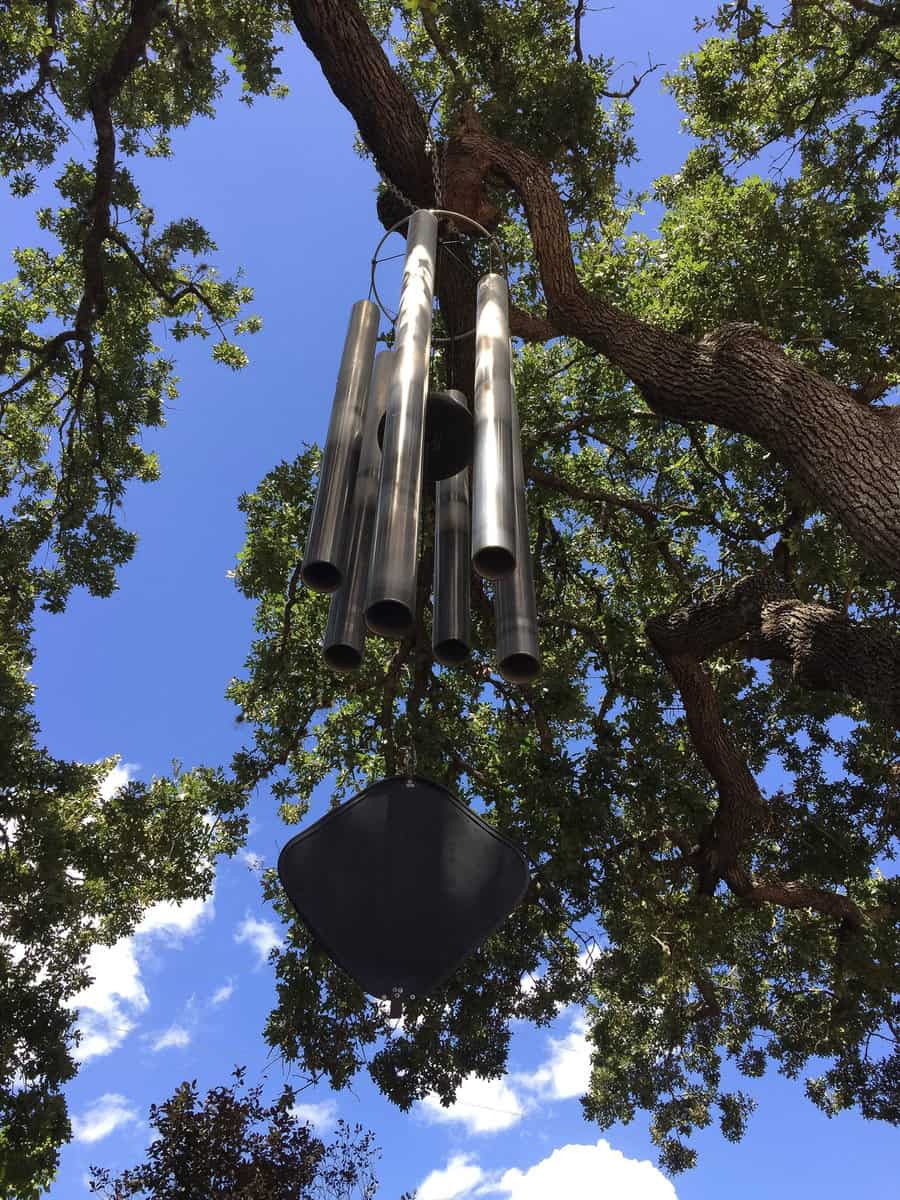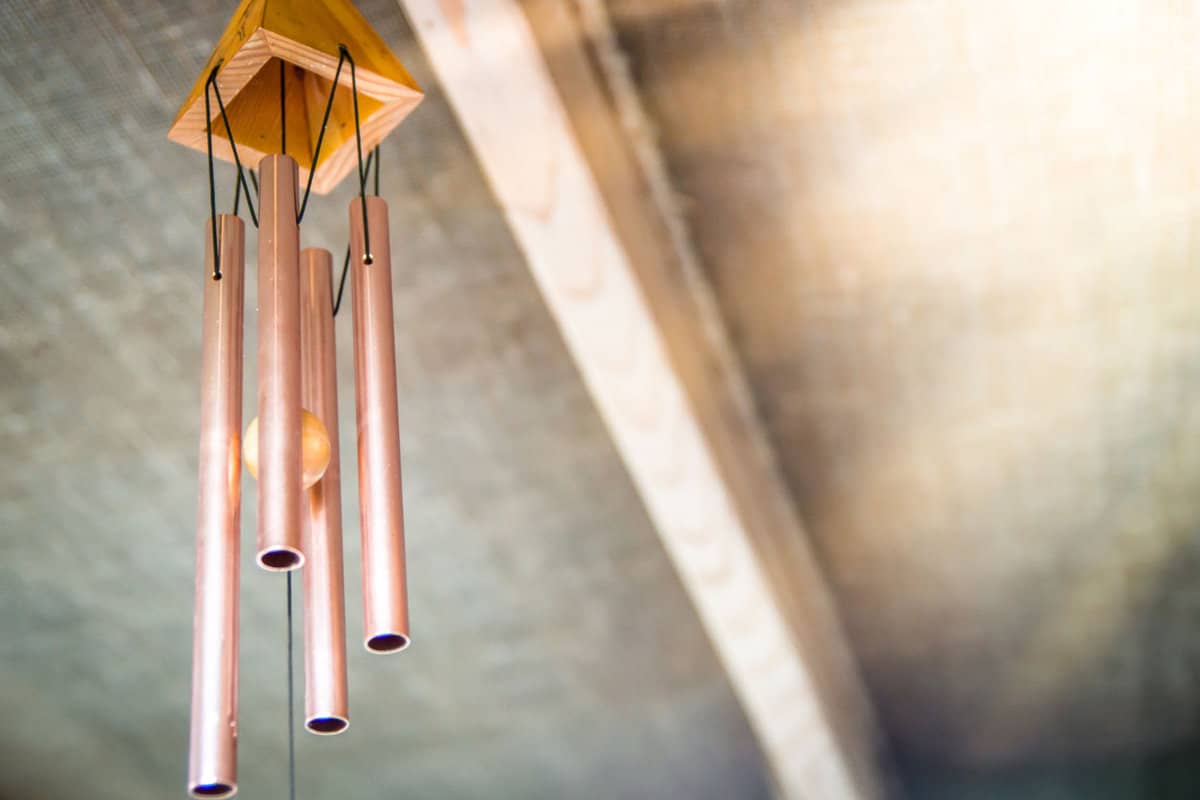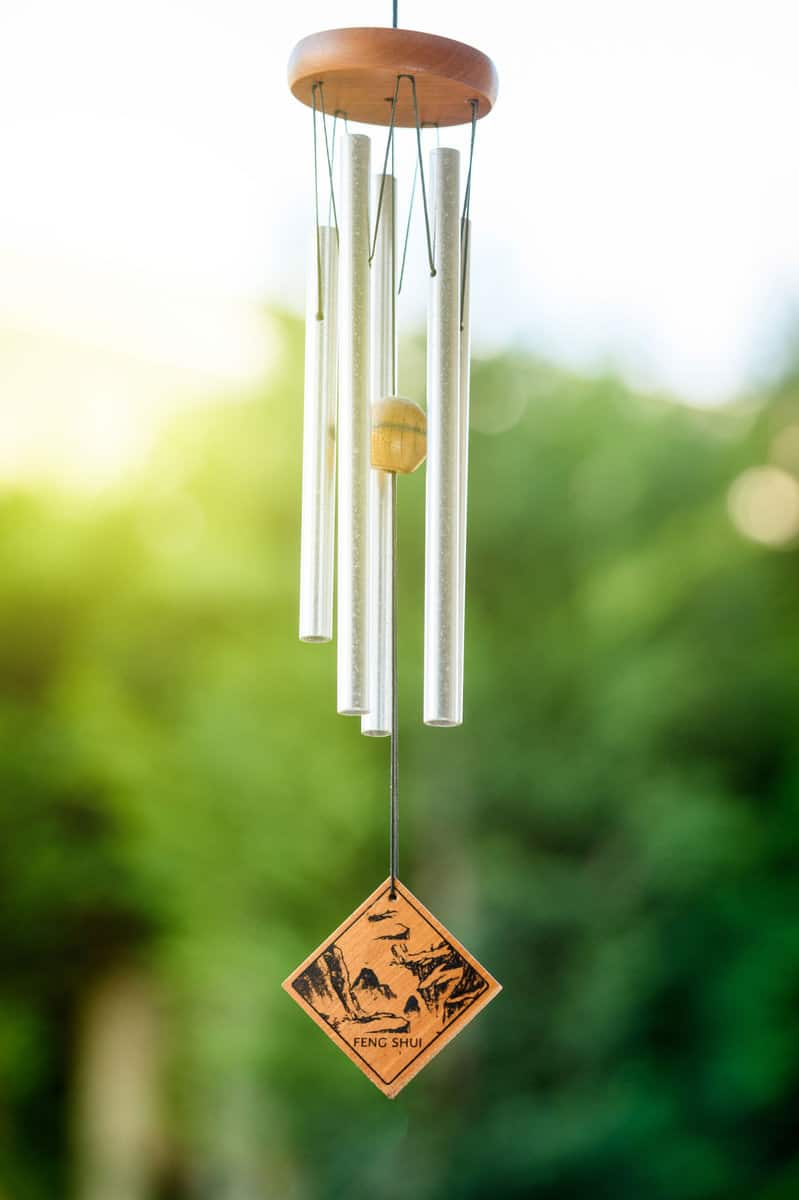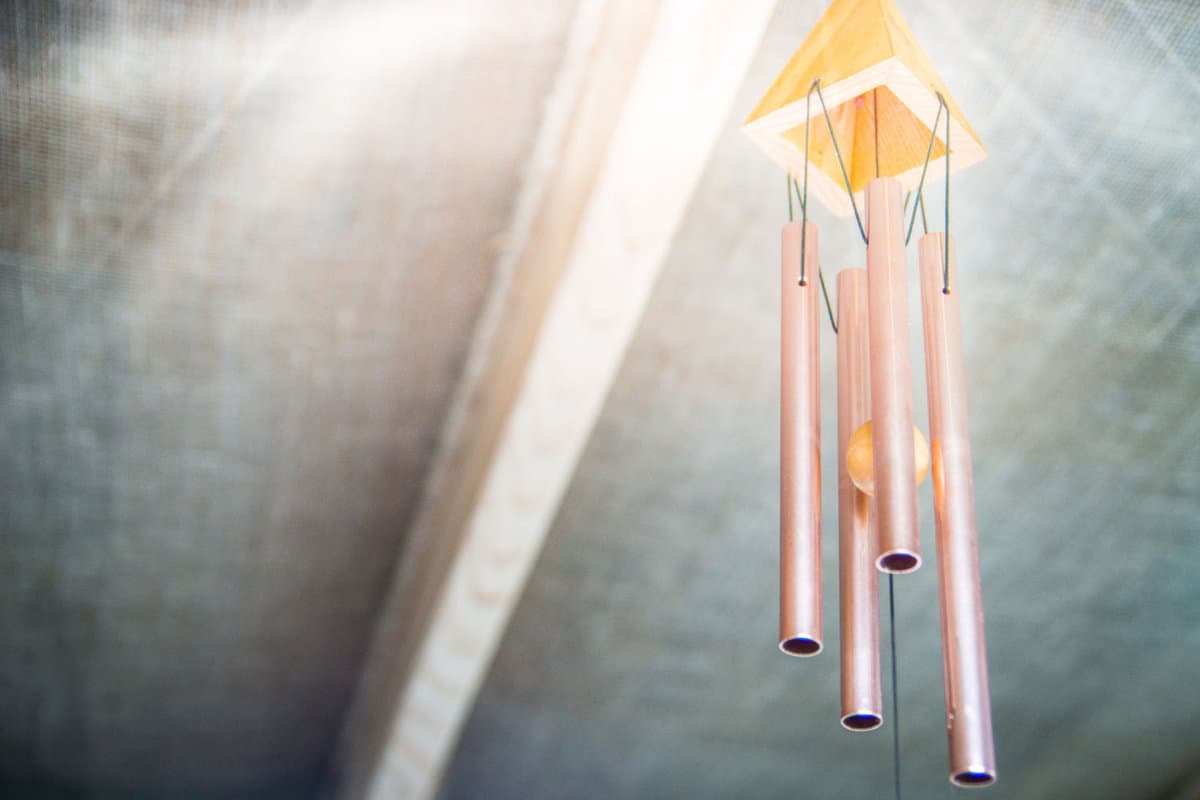Deep-tone wind chimes can add a relaxing sound and a beautiful aesthetic to any garden. You may be wondering how you can make one for your outdoor space. We have thoroughly reviewed the available information on this topic and have some ideas on constructing a deep-tone wind chime.
Deep-tone windchimes have longer and wider chimes which result in deeper tones. You could use a wind chime kit or modify an existing wind chime to get lower notes.
If you would like to make your deep-tone wind chime, follow these steps to get started.
- Choose a template or pattern.
- Select a material for your chimes
- Cut the chimes to get the right tone
- Make a dong, base, and sail
- Mount your windchime
Making your windchimes can be a fascinating project with the right plan and materials. Keep reading as we break down each step and discuss best practices for making deep-tone wind chimes.

1. Choose A Template Or Pattern
The styles and sizes of windchimes are nearly endless. If you have never made a wind chime or another wind instrument before, it may be helpful to use an existing pattern or template to create deep-tone chimes.

Some sites have calculators you can use to get the sound you desire from your chimes.
Choose a plan or template that is labeled for lower musical scales. These labels may include names like baritone, tenor, or bass wind chimes. You may also search for F windchimes or corinthian bells.
Other sites may give a general recipe and rules for creating windchimes. You may modify the plan using its basic principles to get the desired tones. In this video, a Youtuber follows instructions he found online to make his own chimes.
Since longer and larger chimes will typically result in deeper chimes. Measure the space or mounting structure you have picked out for your windchime to make sure your planned windchime will fit.
Include the mounting string down to the bottom striker or sail, as some chimes have a lower weight or sail that goes past the longest chime.
How Many Chimes Should A Wind Chime Have?

Wind chimes traditionally have anywhere from five to eight chimes. For your first wind chime project, we recommend using the standard five chimes to keep the design and sound simple.
There are patterns and plans to get the chimes to play specific melodies. These may require more chimes.
2. Select A Material For Your Chimes
Chimes are usually a sort of metal or glass. Copper or brass metals are great for deep-tone or baritone windchimes. Steel conduit piping or aluminum metals are less expensive and still produce a quality sound.
Click here to see stainless steel tubing on Amazon.
Make sure you consult the plan or template you have chosen and purchase enough bundles to get the right chimes in the sizes needed to produce the best sound.
Click here to see brass tubes for windchimes on Amazon.
You'll need a tool to cut down the tubes to the desired lengths. We recommend a tube cutter to make clean cuts in the metal easily. Choose a cutter that can handle the thickness and metal you choose.
The below cutter will work with aluminum and steel that is less than one and one-quarter inches in diameter.
Click here to see a pipe cutter on Amazon.
What Material Makes The Best-Sounding Windchimes?
Every material has its unique sound. Wooden wind chimes made from bamboo will produce percussion-type sounds along with different tones.
Metals chimes are affected by the diameter and length of the chimes, and you can get quality sound from inexpensive materials.
For large deep, tone chimes, some DIYers have repurposed fence posts or other types of piping found curbside to make great-sounding chimes.
Brass is used for making various musical instruments due to its resonance and ability to conduct pure sound. Many consider it a top choice for chimes.
3. Cut The Chimes To Get The Right Tone
Once you have chosen the material and have a plan for your wind chimes, you'll measure and cut them to get the right tone. You may follow a chart and do a little math to get the correct lengths for your chimes, or if you don't mind experimenting, you can use the first pipe length to tune the others.
Cut and strike the first chime and listen to the tone, then cut your next pipe in 1/2-inch intervals testing it against the first pipe until you get the tone you want. Tune the third and each following chime by striking the two before it to build intervals pleasing to the ear.
What Makes Wind Chimes Deeper?
Cutting the pipes shorter will raise the tone, while sanding along the sides will lower the tone. Long wide mouth tubes will produce a deeper sound, with the longest chimes making the deepest sound. The clapper or dong should hit mid to low on the pipes to get the lowest tones.
4. Make A Dong, Base, And Sail
Your chimes will need a base to hang from and a dong to hit the chimes. The dong is also called a striker or clapper. Some wind chimes place this at the lowest point of the shortest chime; other chimes have the dong suspended in the middle with a piece called a sail at the bottom.
The sail extends past the longest chime and is hung at an angle to catch the wind moving the striker or clapper so that it hits the piping to create a chime.
Measure and cut a thicker material for the base for deep-tone windchimes. The larger the chimes, the larger your base will need to be to create adequate support. Use an existing template or purchase a base that is already cut to the desired size.
The base could be made of any solid weather-resistant material. Various materials have been used, from round metal plates to wooden disks. These 14-inch round disks could be spray painted to match or accent the chimes.
Click here to see wooden disks for a wind chime base on Amazon.
What Should You Use For A Sail On A Wind Chime

The sail could be as practical as a simple piece cut to catch the wind. It should be heavy enough to move the striker against the chimes. The sail should hang below the longest chime.
Many use the sail to add personality to their windchimes. Choose a meaningful decoration or trinket like a Christmas ornament or an engraved plate with your favorite phrase. Some makers choose a smooth stone for their sail.
Use multiple small ornaments for more variety. Small bells or decorative pieces of glass also catch the light well and can be pleasing to the eye.
Click here to see an ornament for a wind chime on Amazon.
5. Mount Your Windchime
Once you have chosen and cut your chimes, base, striker, and sail, you are ready to build and mount your windchime: measure, mark, and drill holes in the pieces you'll need for stringing the chime.
Use metal string, twine, or fisherman's line to string your wind chime together. The below video gives a basic idea of measuring and planning where to place the holes in the chimes and base. It provides an idea of how you can construct your windchime.
How Can You Make Chimes Sound Better

It is possible to cut the chimes according to a specific musical scale. Picking notes that are part of a musical group called a chord will be the most ear-pleasing. To do this, use a piano, tuner, or online chart and calculator.
If your chime is clanging too much or too little, try adjusting the middle string length so that the striker hits a different part of the chime. If your wind chimes won't move at all, you may need a heavier sail. Observe your sail and see how it moves in the wind. Adjust it or change it if necessary to get a better sound.
If you were careful to cut the right notes and you still have an unpleasing dissonance, study your chime in the wind. Your chimes may be too close together. Use a new base with the holes for the chimes spaced at wider intervals so that the dong or striker hits the chimes one or two at a time.
Final Thoughts
Now that you have found out all you need to know to get started making your own deep-tone wind chimes get inspired! Research and design a beautiful centerpiece that will bring serenity and beauty to your outdoor space for years to come.
Made it to the end? Read the following for more about wind chimes and other garden decors.
Do Wind Chimes Keep Hawks Away?
What Is A Safe Paint For Metal Bird Baths? [3 Great Options To Choose From]





